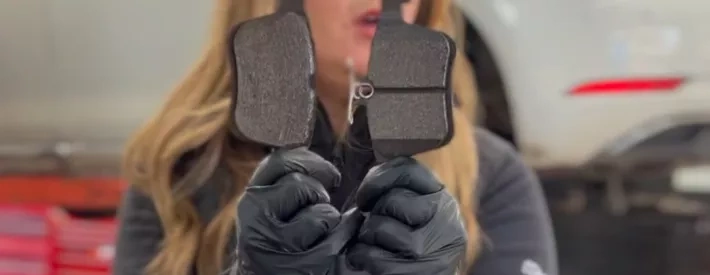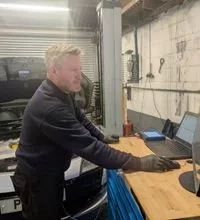How to keep customers (and their vehicles) safe

Working in a garage, you see a lot of strange, dangerous, and downright terrifying things. From neglected vehicles on the brink of failure to outright hazardous situations that make you wonder how they made it to the garage. It serves as a stark reminder of how vital communication between garage owners and customers truly is.
When customers don't fully understand the severity of an issue, they may neglect necessary repairs, leading to some of the worst situations I've encountered in the garage – and I’ve seen a few.
Here are the five worst things I've seen and why these situations emphasise the need for clear communication with our customers.
1) Screeeeech! Brake pads
One of the most alarming things I've come across is a vehicle with brake pads worn down so far that the driver was essentially stopping the car with metal on metal. The screeching sound was a clear sign of trouble, but the customer had ignored it, assuming it was just a minor annoyance. This customer actually only had these repairs done as I’d been passenger in the car the weekend before and heard the noise of the brakes.
The dangers of driving with completely worn-out brake pads cannot be overstated. The vehicle's ability to stop is severely compromised, increasing the risk of a crash. In this case, communication is key. Customers need to understand that ignoring strange noises from their vehicle is never a good idea. Regular inspections and timely repairs are essential for safety.
2) No sir they are not slicks, they are in fact bald!
Another frequent yet dangerous sight is a set of bald tyres—tyres so worn that they have virtually no tread left. This one In particular we named Tyrone and sent him to Cheshire Fire and Rescue service where he now educates drivers on what your tyres SHOULD NOT look like. The owner of Tyrone insisted they just had a puncture…
We also had a Golf R in a few weeks ago and the front two tyres were completely bald. I’m always intrigued as to what the owner of the vehicle was thinking to let their tyres get in such a state, so I asked. His answer: “I knew they were bad, I just couldn’t be arsed sorting them”
Without sufficient tread, tyres lose their grip on the road, making it difficult to stop or steer, especially in wet or icy conditions. This situation is a ticking time bomb for a blowout or an incident.
Many customers may not know how to check their tyre tread or understand the importance of it. That’s why it’s crucial for us, as mechanics, to educate them on the dangers of driving on worn-out tyres. When we recommend new tyres, it's not about upselling; it's about ensuring their safety on the road.
3) Crash, bang, pop!
This one was an eye opener for me as to how customers portray us as trying to upsell. The car had a fractured coil spring, they didn’t have time to have it fixed, next day we hear a bang and look outside. The car in question was lopsided on the other side of the road where the coil-spring had snapped and popped the tyre too!
Suspension is no joke and unfortunately many drivers ignore “advisories” from MOTs and hope they’ll not come up on next year’s ticket when in fact they are just putting themselves in danger. Talking through the safety implications with your customer may seem like your “telling them off” but in fact the transparency really works. They trust you for being honest, they get the work done and they are safe!
4) Red means danger
Many customers ignore the check engine light, assuming it's a minor issue or a false alarm. However, I've seen cases where this assumption has led to significant engine damage. One of the worst cases involved a customer who ignored the light for months, only to have the engine seize up completely due to a lack of oil pressure.
The check engine light is not something to be ignored. It's a warning that something is wrong, and it could be as serious as a failing engine component. We need to communicate this clearly to customers, helping them understand that early diagnosis can save them from costly repairs down the road.
5) Howdy Cowboy? Or that’s what title their worth…
We recently had a customer who was complaining of a shaking when driving. We thought it might be the balancing. We went to jack it up to find they had a 20 year old tyre fitted at a part worn garage round the corner and they’d only put two wheel nuts back on. TWO WHEEL NUTS!!!
It was bad enough they’d paid £45 for this awful example of a tyre but the fact they were left in complete danger by the cowboy round the corner made me feel sick.
People think they are buying a bargain when quite frankly in my opinion it is a false economy. When you buy a part worn tyre you don’t know where it’s been, what car it’s off or whether it is even road worthy. Customers do not understand tyres enough to know what to look for which is why it is crucial we educate them on what is safe!
These five examples highlight the critical role that communication plays in the automotive industry. As technicians, garage owners, sales advisors, whatever the role it's our responsibility to inform, educate, and advise. When customers understand the implications of ignoring or delaying repairs, they are more likely to act, ultimately keeping themselves – and others – safe on the road.




